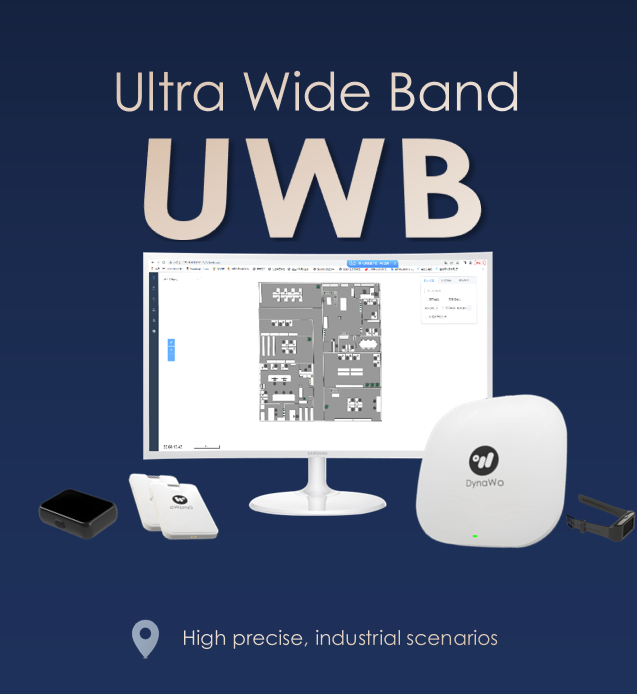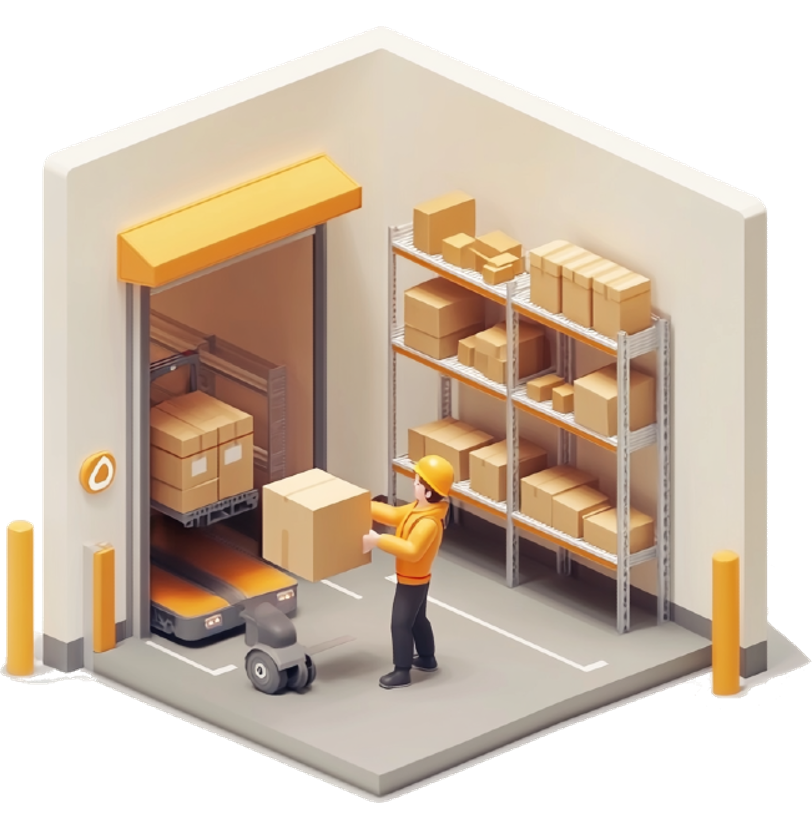UWB Locating System
Locating System of the Digital Infrastructure for the Factory of Tomorrow
The Ultra-Wideband (UWB) locating system is a powerful short-range wireless communication and positioning technology known for its high precision, low power consumption, and robust resistance to interference. These strengths make UWB increasingly popular across IoT, smart buildings, and industrial automation sectors.
Initially developed in the 1960s for military and radar applications, UWB began to attract academic interest in the early 2000s. In 2002, the Federal Communications Commission (FCC) approved UWB for civilian use, paving the way for its integration into consumer electronics and positioning systems.

Technical Features
UWB transmits data using extremely short pulse signals, which gives it a very wide bandwidth (over 500 MHz) and high time-domain resolution. This unique feature brings two main advantages: high precision and robust interference resistance. UWB can achieve centimeter-level accuracy, making it far more precise than Wi-Fi or Bluetooth for positioning. Additionally, UWB’s broad bandwidth and low power signals make it highly resistant to interference from other wireless systems, ensuring stable connections even in complex, multi-device environments.
Advantages of DynaWo UWB Locating System

DynaWo UWB Industrial Applications

Asset and Inventory Management
Enhances operational efficiency by reducing search times and minimizing misplacement, allowing managers in large storage facilities to quickly locate items, streamline retrieval routes, and optimize inventory management.
Maintenance and Lifecycle Management
Integrated with sensors, DynaWo UWB monitors machine usage, condition, and location to predict breakdowns and schedule maintenance, extending equipment lifespan.

Robotic Arm Coordination
Ensures precise control of robotic arms by human operators, supporting accuracy and efficiency in complex manufacturing and assembly tasks.

Warehousing Management
Tracks shelves and pallets to support dynamic reorganization and flexible storage layouts in smart warehousing. UWB also enables automated forklifts to navigate precisely, re-allocating human workforce and reducing error rates in large facilities.
Production Line and Intralogistics Optimization
Enables real-time tracking of each workpiece, helping managers monitor production progress, address bottlenecks, and streamline workflow. In addition, tracking raw materials and finished products also allows for optimized routes for material transport vehicles, boosting material flow and storage efficiency.

AR Navigation
Embedded RFID/NFC LEDs and buzzers enable enhanced proximity detectors, alerts and automation.
Product Recording and Quality Traceability
Provides real-time product location updates across the supply chain, enhancing transparency and visibility in logistics tracking.
As IoT, AI, and automation advance, UWB holds immense potential for broader adoption. With the evolution of 5G and edge computing, UWB will complement other positioning technologies to create comprehensive location-based solutions, accelerating smart living and Industry 4.0.
Interested? Meet our UWB system today!
